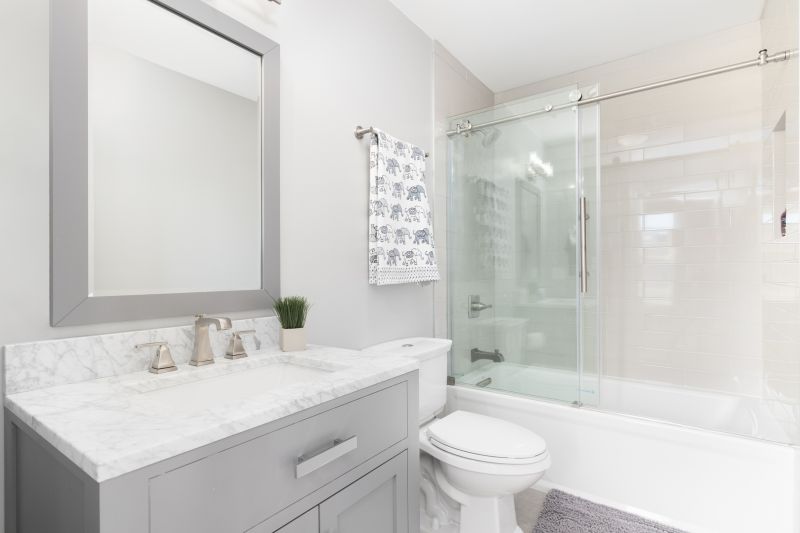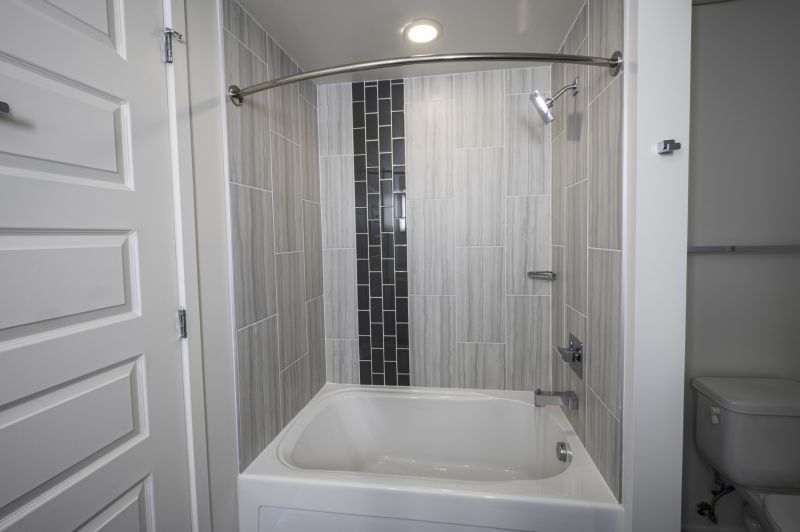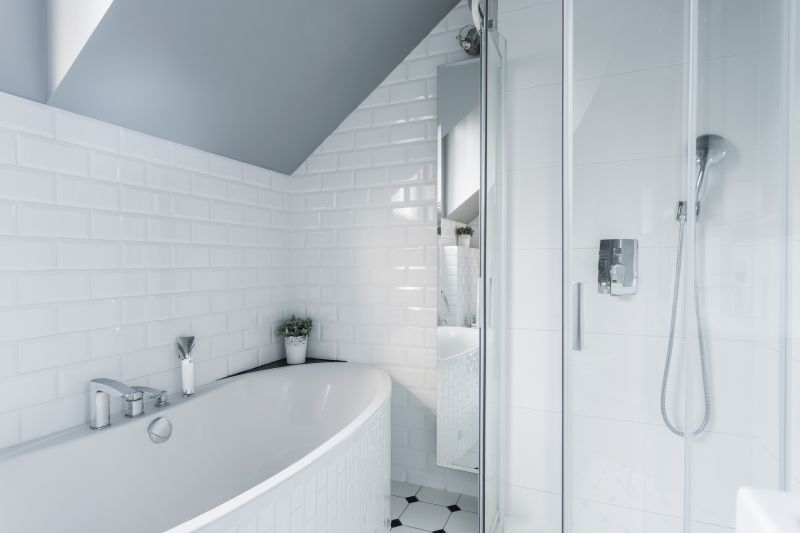Designing Small Bathroom Showers for Better Use
Designing a small bathroom shower involves maximizing space while maintaining functionality and style. Compact layouts require careful planning to ensure ease of movement and accessibility. Common configurations include corner showers, walk-in designs, and shower-tub combos, each offering unique advantages for limited spaces. Innovative use of glass enclosures and minimal framing can create an open feel, making the bathroom appear larger. Materials like large tiles or lighter colors can also contribute to a sense of spaciousness.
Corner showers utilize space efficiently by fitting into the corner of a small bathroom. They often feature sliding or pivot doors to save room and can be customized with shelves and seating.
Walk-in showers provide an accessible and sleek look, often with frameless glass for a seamless appearance. They can be designed with a single shower head or multiple jets for a spa-like experience.

A compact corner shower with clear glass doors maximizes space and light, creating an open atmosphere in small bathrooms.

Sliding doors and minimal framing make these enclosures ideal for limited spaces, offering both style and practicality.

Combining a shower with a tub provides versatility for small bathrooms, especially when space is constrained.

Minimalist fixtures and large tiles enhance the sense of openness, making small bathrooms feel more spacious.
Selecting the right layout for a small bathroom shower depends on several factors, including available space, user preferences, and aesthetic goals. Corner showers are ideal for maximizing corner space and can be fitted with various door styles to suit different tastes. Walk-in designs are increasingly popular for their sleek appearance and accessibility, often featuring frameless glass for a modern look. Shower-tub combinations offer a practical solution, especially in bathrooms that serve multiple functions, providing flexibility without sacrificing space. The choice of materials and fixtures can significantly influence the visual impact, with large tiles and light colors helping to create an airy environment.
The choice of glass and tile can dramatically influence the perception of space. Clear glass enclosures open up the room visually, while textured or patterned tiles add visual interest without overwhelming the space. Using a monochromatic color palette with subtle variations can unify the design and make the bathroom appear larger. Incorporating elements like linear drains and sleek fixtures contributes to a minimalist aesthetic that emphasizes openness. When space is limited, every element must be carefully considered to balance practicality with style, ensuring the small bathroom remains comfortable and visually appealing.


